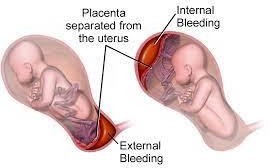A nurse is reinforcing teaching about dietary intake with a client who is breastfeeding her newborn. Which of the following information should the nurse include in the teaching?
"Increase your daily intake of folic acid."
"Consume 1500 calories per day."
"Decrease your daily intake of protein."
"Drink enough decaffeinated fluids to quench your thirst."
The Correct Answer is D
Choice A rationale: While folic acid is important during pregnancy, this statement is not specifically related to dietary intake for breastfeeding mothers. Adequate folic acid intake is essential during pregnancy to prevent neural tube defects in the developing fetus.
Choice B rationale: This statement does not provide enough information and may not be appropriate for all breastfeeding mothers. The caloric needs of breastfeeding mothers can vary depending on their individual metabolism, activity level, and nutritional status.
Choice C rationale: Breastfeeding mothers require adequate protein intake to support their own nutritional needs and the production of breast milk. Decreasing protein intake is not advisable and may lead to nutritional deficiencies.
Choice D rationale: Breastfeeding mothers need to stay well-hydrated to maintain an adequate milk supply and to support their own health. Drinking enough fluids, preferably decaffeinated, is essential for breastfeeding moms.
Nursing Test Bank
Naxlex Comprehensive Predictor Exams
Related Questions
Correct Answer is B
Explanation
Choice A rationale: A positive contraction stress test warrants immediate attention and evaluation. Waiting for 24 hours to repeat the test could delay necessary interventions in case of fetal distress.
Choice B rationale: A positive contraction stress test indicates that there are late decelerations in the baby's heart rate during contractions, which may suggest fetal distress. In such cases, it is essential to admit the client to the hospital for further evaluation, monitoring, and appropriate management.
Choice C rationale: Checking the client's cervix for dilation is not the most appropriate action in response to a positive contraction stress test. Fetal well-being and assessment take priority in this situation.
Choice D rationale: A positive contraction stress test requires further action and should not be considered a routine finding. Proper management and evaluation are necessary when the test results are positive.
Correct Answer is D
Explanation
Choice A rationale: While smoking during pregnancy can have adverse effects on both the mother and the baby, it is not the most common risk factor for placental abruption.
Choice B rationale: Maternal battering, or experiencing domestic violence, can have serious consequences for the pregnant woman and her unborn baby, but it is not the most common risk factor for placental abruption.
Choice C rationale: Maternal cocaine use during pregnancy can lead to various complications, but it is not the most common risk factor for placental abruption.
Choice D rationale: Maternal hypertension is the most common risk factor for placental abruption. Placental abruption is a serious condition where the placenta separates from the uterine wall before delivery, leading to potential complications for both the mother and the baby. Hypertension can cause changes in blood vessels that increase the risk of placental abruption.

Whether you are a student looking to ace your exams or a practicing nurse seeking to enhance your expertise , our nursing education contents will empower you with the confidence and competence to make a difference in the lives of patients and become a respected leader in the healthcare field.
Visit Naxlex, invest in your future and unlock endless possibilities with our unparalleled nursing education contents today
Report Wrong Answer on the Current Question
Do you disagree with the answer? If yes, what is your expected answer? Explain.
Kindly be descriptive with the issue you are facing.
